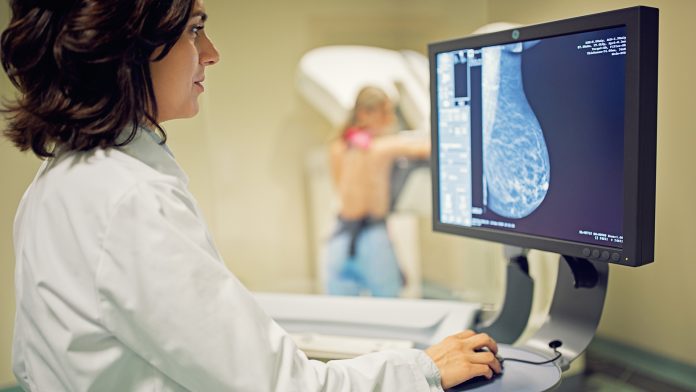
Women with benign breast disease are twice as likely to be diagnosed with breast cancer, according to research from Hospital del Mar in Barcelona.
The study examined over 700,000 Spanish women who took part in breast screening. The study compared women who were diagnosed with any benign breast disease, including fibroadenomas and cysts, with women who were not diagnosed with any breast disease.
The research was presented at the 13th European Breast Cancer Conference by Dr Marta Román.
Breast cancer risk is long-lasting
The researchers found that an increased risk of breast cancer persisted for at least two decades. The researchers believe women with breast disease may benefit from more frequent screening to ensure those who develop cancer are diagnosed in the early stages.
The study included data from 778,306 women aged between 50 and 69 years who took part in breast screening at least once between 1996 and 2015. Every woman in Spain in this age bracket is offered a breast screening mammogram, every two years.
Researchers tracked the women until 2021, during this time, 17,827 women were diagnosed with benign breast disease and 11,708 women were diagnosed with breast cancer.
The data showed that around 25 out of every 1,000 women with benign breast disease were subsequently diagnosed with breast cancer. Around 15 out of every 1,000 women without benign breast disease were diagnosed with breast cancer. The increased risk of breast cancer was found in women regardless of their age and the risk persisted for at least 20 years.
After the four-year follow-up period, women with benign breast disease were found to be 99% more likely to develop breast cancer. Across the 12-to-20-year follow-up period, women were more than 96% more likely to be diagnosed with breast cancer.
Optimising breast disease screening
“This is important, it suggests that benign breast disease is a key indicator that a woman has a higher risk of breast cancer, rather than simply being something that could develop into cancer. In fact, we often find a benign disease in one breast and then cancer develops in the other breast,” explained Dr Román.
“We can use this knowledge, alongside what we know about other risk factors, to help optimise the breast screening that we offer to women. For example, if a woman is diagnosed with a benign breast disease, and she has other high-risk factors, such as a family history of breast cancer, she could benefit from more frequent screening,” she added.
These findings have been supported by the European Breast Cancer Council. Professor David Cameron, from the University of Edinburgh Cancer Research Centre, has highlighted the importance of the research, saying: “Screening can help diagnose breast cancer at an earlier stage when the chances of survival are greater. This large study shows that women in a screening programme who are diagnosed with a benign breast disease appear to be at a higher risk of being diagnosed with breast cancer in the long term and they may therefore benefit from enhanced screening.
“Mammograms quite often pick up signs of breast disease that are not cancer, such as cysts and fibroadenomas, and it’s important to remember that the majority of women with these conditions will not go on to develop breast cancer.”






















